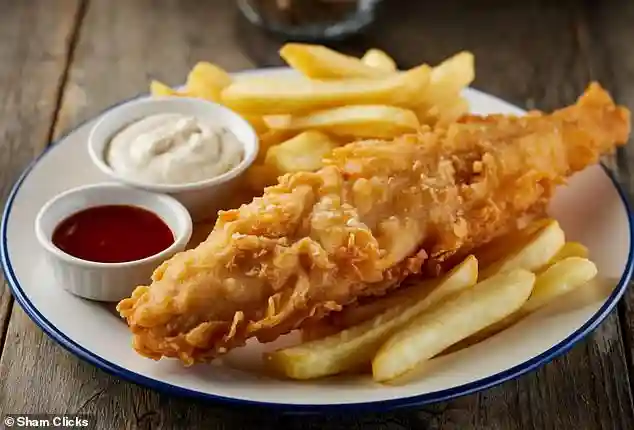If you’ve ever picked up a portion of battered cod and thought, “Nice… but could be punchier,” there’s a growing crowd who think they’ve found the answer.
A humble North Atlantic fish—saithe, which you might have heard called coley—is suddenly being talked about as the next big thing in British chip shops.
Its flesh looks a little grey before cooking, which hasn’t helped its image, but those who try it say the flavour packs more oomph than the classics.
Why Fishermen Are Pushing for a Change
Norwegian fishermen have been quietly championing saithe for a while, especially now that conservationists are sounding the alarm about dwindling cod numbers.
With overfishing shrinking cod shoals, chippies are being nudged toward alternatives that offer the same comfort without the ecological guilt.
And for shop owners grappling with rising prices, a cheaper, sustainable fish is beginning to look very tempting.
Early Adopters Are Already Testing the Waters
Some spots in England have already taken the plunge.
Harrison’s Fish and Chips in Oxford and The Scrap Box in York have both experimented with saithe on their menus, and the feedback—according to industry voices—has been surprisingly warm.
“The UK’s fish and chip scene is an institution,” said Bjørn-Erik Stabell of the Norwegian Seafood Council.
“But we’ve got to look past cod and haddock. Saithe is genuinely a great alternative.”
He says chefs who can get over the unfamiliar colour of the raw fish are already turning into enthusiastic converts.
What Makes Saithe Different?
To clear up a common confusion: saithe is part of the pollock family, but it’s not the same as Atlantic pollock—already a known cod stand-in for many shops.
Scientists call saithe Pollachius virens, and it has naturally darker raw flesh than cod.
Once it hits the pan or fryer, though, it turns a clean, bright white.
The flavour is richer, more distinctly “fishy,” and more satisfying, according to experts like Faroese Seafood.
That deeper taste makes it great not just for deep-fried fillets but also for fish pies, croquettes, rice dishes, or baked with a crunchy herb topping.
Chef and environmental advocate James Strawbridge has called it a “great sustainable choice,” praising its light texture and subtly sweet notes.
A Quick Look at What Saithe Actually Is
Saithe is an edible pollack-family fish, widely regarded as a sustainable substitute for cod and haddock.
People often overlook it because of its darker raw colour, even though it cooks up pale and appealing.
It’s also nutrient-rich—loaded with protein, vitamin D, B vitamins, and selenium.
And from a kitchen point of view, it’s sturdy, flaky, and easy to deep-fry.
Better still, it’s often cheaper than the traditional favourites.
Why Sustainability Is Pushing This Shift
Saithe is plentiful around the British Isles and Ireland, especially up along the north-west coastlines of Scotland and Ireland.
Unlike cod and haddock, which are under serious pressure, saithe stocks are healthy enough to be fished responsibly without threatening the species’ future.
Meanwhile, cod and haddock quotas have been tightening over recent years, squeezing chip shops and driving prices upward.
The UK’s appetite for these two fish is huge—far bigger than the supply—forcing the country to rely heavily on imports.
And while tonnes of cod and haddock flow in every year, demand for saithe remains tiny, even though it’s much more affordable.
Countries like France, Germany, Norway, and Sweden enjoy it far more often than the UK does.
To put numbers on it: the UK brought in over 191,000 tonnes of cod and more than 101,000 tonnes of haddock in the past year… yet only 957 tonnes of saithe.
Our Heavy Dependence on Imported Fish
A study from the University of Exeter recently highlighted how dramatically the UK’s seafood landscape has changed: today, more than 80% of the fish eaten in Britain comes from overseas.
That’s over six times the amount imported in 1900.
And on average, those imports travel more than 2,000 miles before reaching British plates, with China topping the list of sources.
Why Experts Want Us to “Make the Swap”
The Marine Conservation Society has been urging the public to rethink the fish they’re buying.
Cod, haddock, salmon, tuna, and prawns—known as the “big five”—are either overfished or under ecological strain.
Their suggested swaps include hake, mussels, farmed trout, anchovies, sardines… and yes, saithe.
Their argument is simple: expanding our tastes helps take pressure off vulnerable species, keeps prices in check, and supports a more sustainable fishing industry.
Sustainable Options the MCS Recommends
For anyone looking to widen their fish repertoire, the organisation highlights several strong choices:
• UK-farmed oysters, mussels, and king prawns
• UK-farmed Atlantic halibut
• Herring from the Irish Sea or North Sea
• Plaice caught in UK waters
• European hake, whose stock has bounced back after careful management
Each of these avoids the strain placed on cod, salmon, or tuna—and helps rebuild healthier oceans for the long term.
So… What Happens Next?
It’s too early to say whether “saithe and chips” will ever roll off the tongue as naturally as cod and chips.
But between rising costs, environmental pressure, and growing chef enthusiasm, the tide does seem to be turning.
And if the flavour is as good as fans claim, British diners might just find themselves warming to a fish they barely noticed before.
Share on Facebook «||» Share on Twitter «||» Share on Reddit «||» Share on LinkedIn